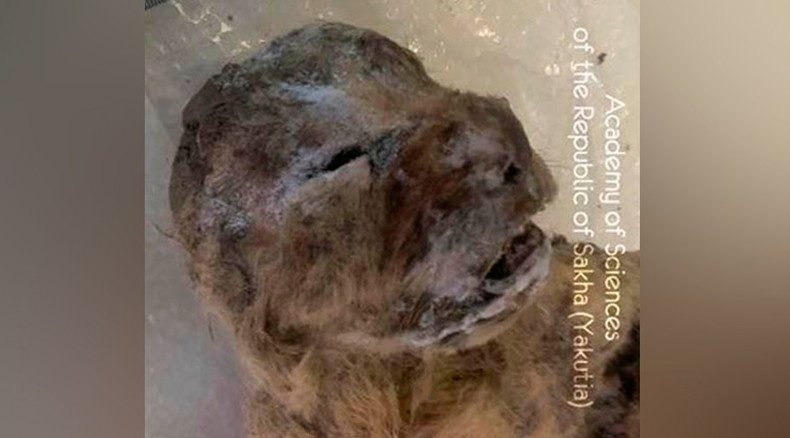10,000 yo cave lion cubs found in Siberia go on show

Two extinct cave lions, found in Siberia’s permafrost in a condition described as “the best preserved ever seen in the world,” will be presented to the media by the Academy of Sciences of Yakutia in November.
The cubs were discovered in Siberia’s Sakha Republic this summer, although the sensational find was only announced today.
The Academy of Sciences of Yakutia teamed up with the Siberian Times to present the exceptionally rare cave lions’ remains to the media later this November.
The Sakha Republic, also known as Yakutia, is Russia’s coldest region with vast areas covered in ice. It provides scientists with a unique platform for discovering extinct animals that have been trapped in permafrost for centuries, frozen and perfectly preserved.

READ MORE: Minus 70 degree frost hits Yakutia
Previously, only fragments of cave lion carcasses and parts of skeletons have been found. Cave lions, Panthera spelaea, lived during the Middle and Late Pleistocene times on the Eurasian continent and were close relatives of the modern Afro-Asiatic lion.
Palaeontologists plan to present the results of the research conducted on the two lions this November. So far they have announced the initial microbiological analysis has shown the remains are free from dangerous infections such anthrax.
This find may shed light on why cave lions became extinct. The current theory is that it happened due to the decline in deer and cave bears - their main prey.
126,000-year-old 90-percent intact pre-woolly mammoth skeleton found in Siberia (PHOTOS) http://t.co/5Sy2jtfHz1pic.twitter.com/ilNRf1XxFy
— RT (@RT_com) September 19, 2015Other fascinating finds from the region will go on show along with the cubs, including a woolly mammoth called Yuka, the 'Oimyakon' mammoth, the carcass of a Kolyma woolly rhinoceros, and Yukagir bison and horses.












